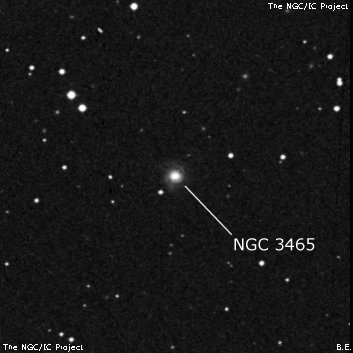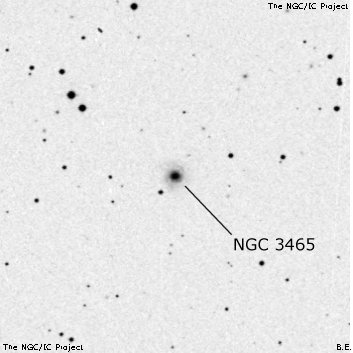NGC/IC Project Restoration Effort
(This is a very very beta version)
NGC3500


Basic Information
Location and Magnitude
Right Ascension: 11:1:51.3
Declination: +75:12:4
Constellation: DRA
Visual Magnitude: 13.5
Historic Information
Discoverer: Herschel W.
Year of discovery: 1801
Discovery aperture: 18.7
Observational
Summary description: vF, eF, D neb, v near (?? Place)
Sub-type: Sab
Corwin's Notes
=====
NGC 3500 is given as a double nebula with one number in the NGC, while JH in
GC assigns two numbers with a single position. In each catalogue, the
position comes from WH's observations on the night of 2 April 1801 which
suffer from large, systematic position errors (see NGC 3752 for more). Dreyer
more or less sorted out the problems for his edition of WH's Scientific
Papers, based on accurate positions measured on 30-inch reflector plates taken
at Greenwich in 1910 or 1911 (see MNRAS 71, 509, 1911).
Unfortunately, neither Dreyer nor the Greenwich observer(s) assign NGC numbers
to all of the galaxies in that list (I have those listed in my note to NGC
3752). I've taken a bit of a liberty here, and have split out WH's two
numbers, III 967 and III 968, giving the first to NGC 3465 (which see), and
the second to NGC 3500 (this may not be correct; see the next paragraph). I
follow Dreyer's lead on the first, but use NGC 3500 for the second where he
does not.
Looking at WH's original sweep 1096, I'm not totally convinced that this is
the correct solution. In CH's fair copy of the sweep (in the Herschel
Archive), we read for the observation
Two, the 1st vF, vS. The 2nd eF and smaller than the first. It is a little
more north and following, but very near to it.
The phrase "but very near to it" has caught my attention. Given that the
galaxies are nine arcminutes apart -- and NGC 3523 is actually closer (seven
arcminutes) to NGC 3500 than is NGC 3465 -- I wonder if one of the asterisms
in the area might not be a better candidate for one of WH's objects. I have
my eye in particular on the double star at 11 01 24.0, +75 11 34 (J2000) --
but is this brighter than the galaxy as WH suggests? For now, I will just
leave this as a possibility in a sweep with known problems.
Steve's Notes
=====
NGC 3500
24" (5/25/14): at 280x appeared faint or fairly faint, fairly small, elongated 2:1 SW-NE, 0.6'x0.3', very small brighter core. Second of three in the KTG 34 triplet, with NGC 3465 9.0' W and NGC 3523 7.0' SE. This galaxy's redshift-based distance is ~150 million l.y., while the other two lie at 325 million l.y.
18" (3/30/05): very faint, small, elongated 2:1 SW-NE, 0.6'x0.3', low surface brightness. Smallest and faintest of a trio with NGC 3523 7.2' SE and NGC 3465 9' W. This galaxy is incorrectly listed as nonexistent in the RNGC and it is not identified as NGC 3500 in UGC, MCG or CGCG.
17.5" (4/25/98): extremely faint, small, elongated 2:1 SW-NE, 30"x20". Faintest of trio with NGC 3465 9' W and NGC 3523 7' SE. A pair of mag 12 stars [30" separation] is 6' preceding. Observation difficult due to very poor transparency.



